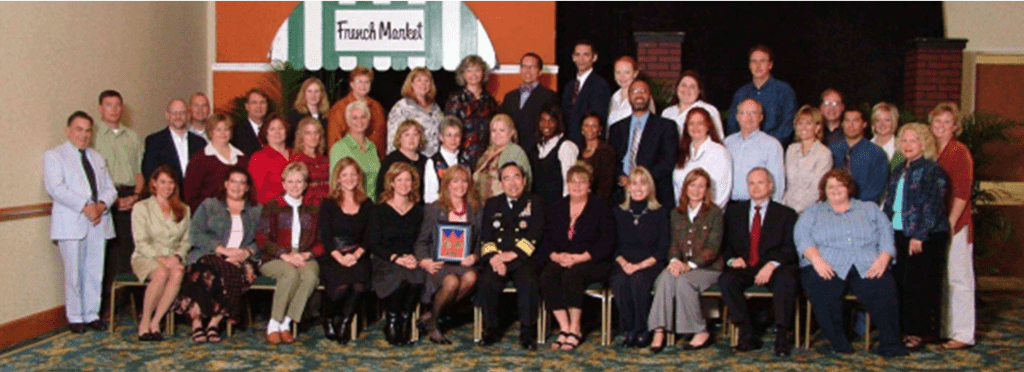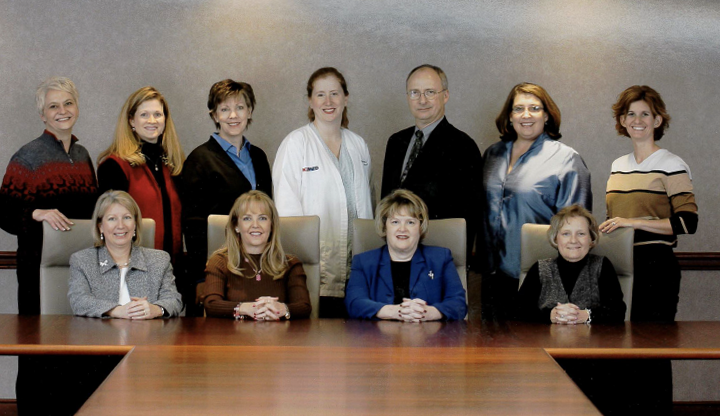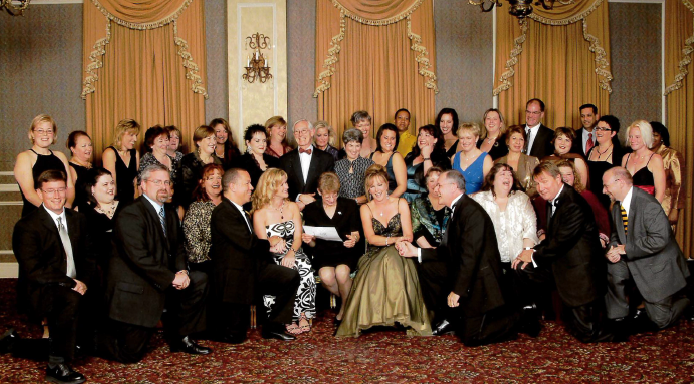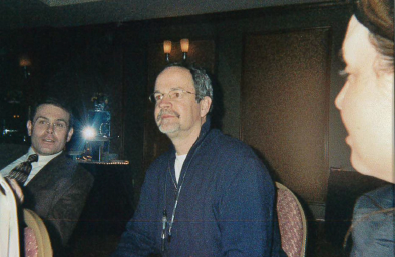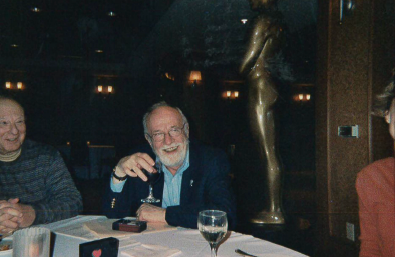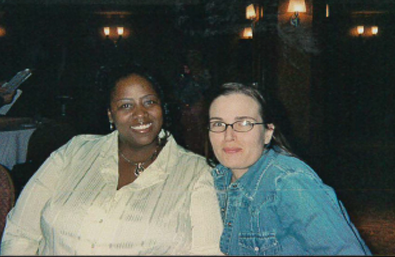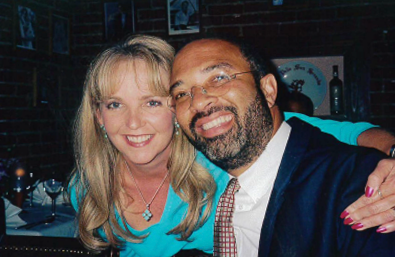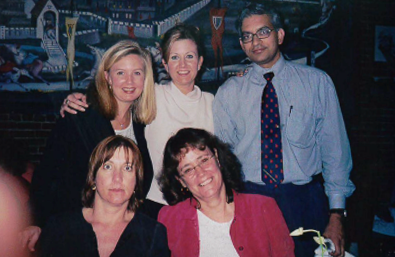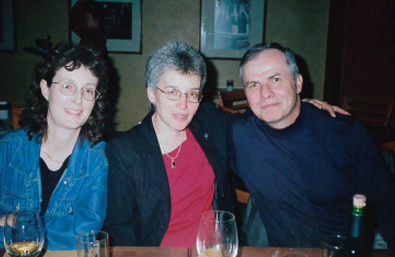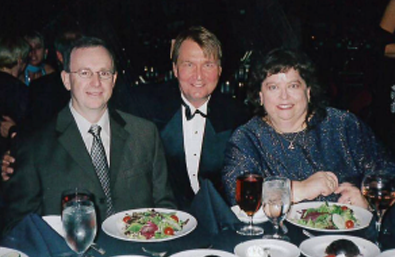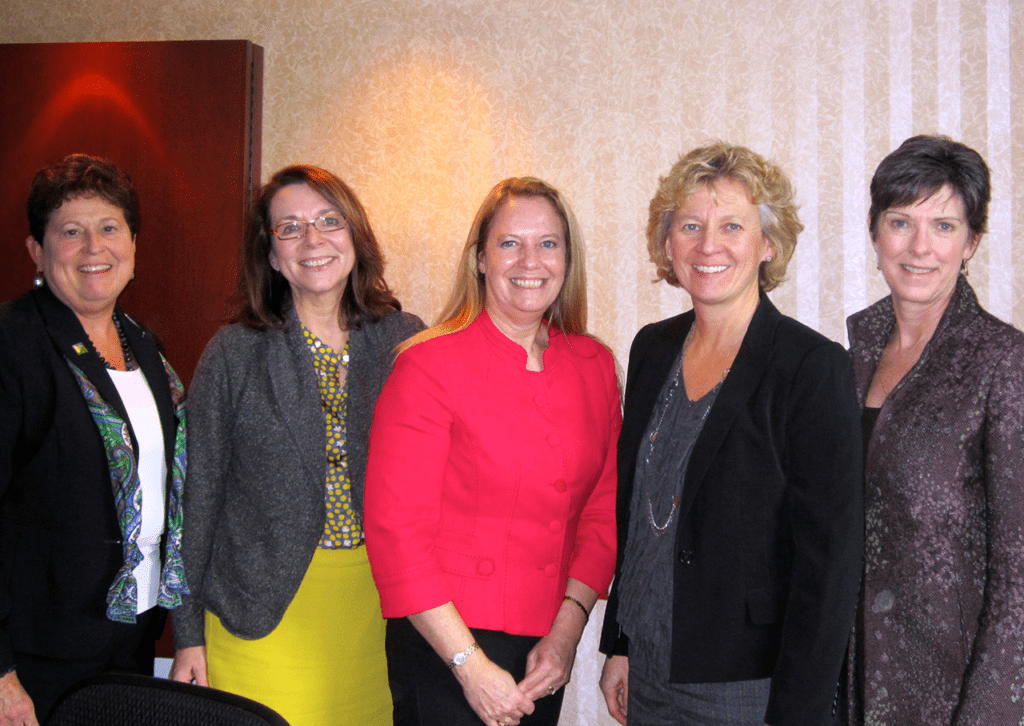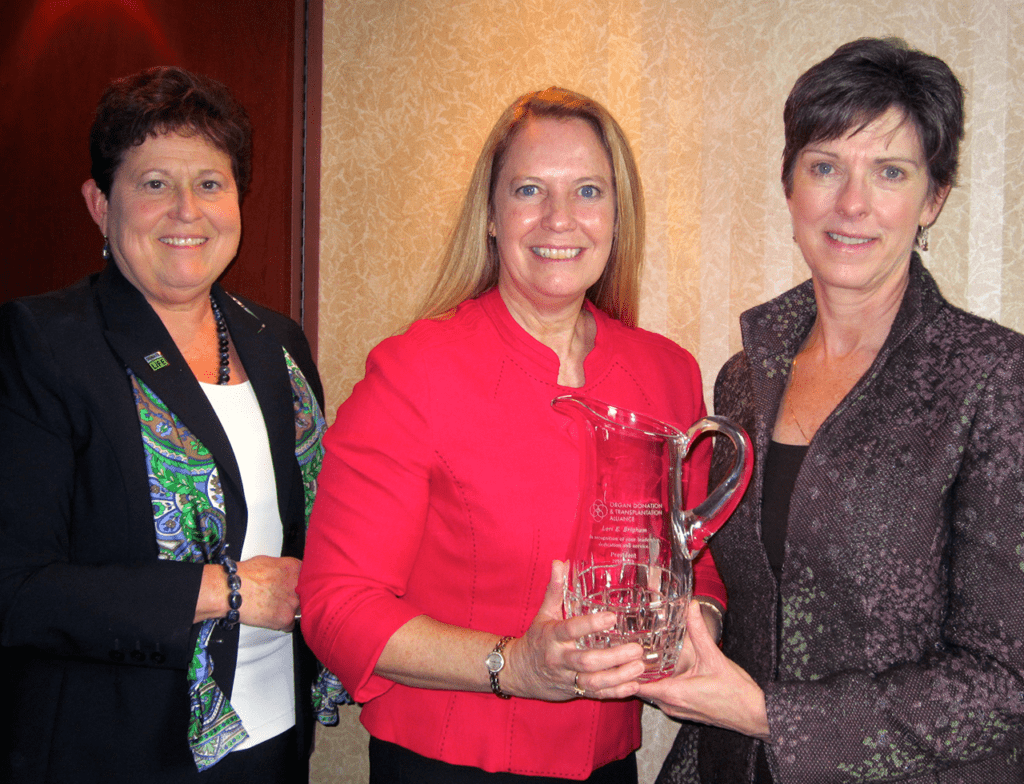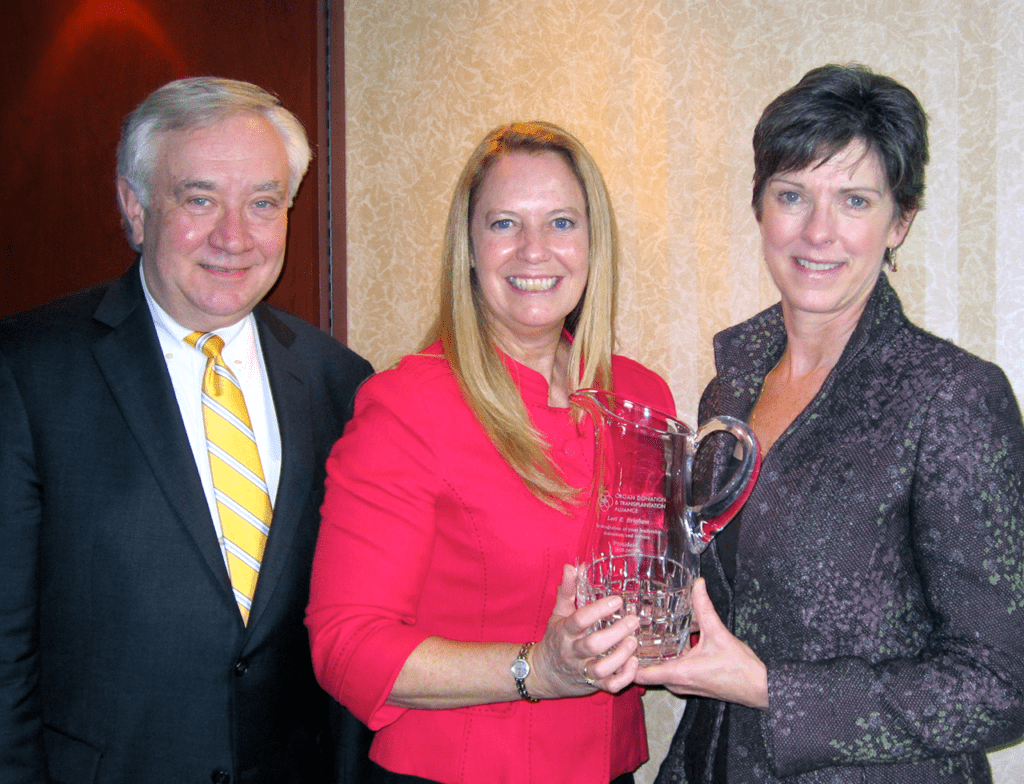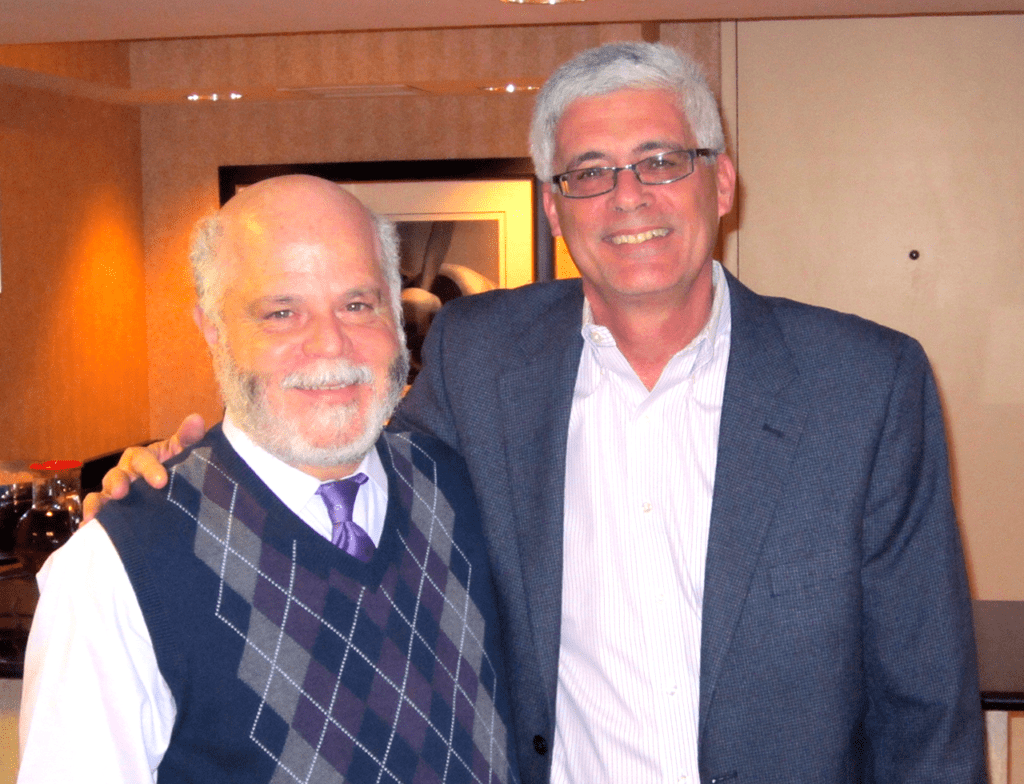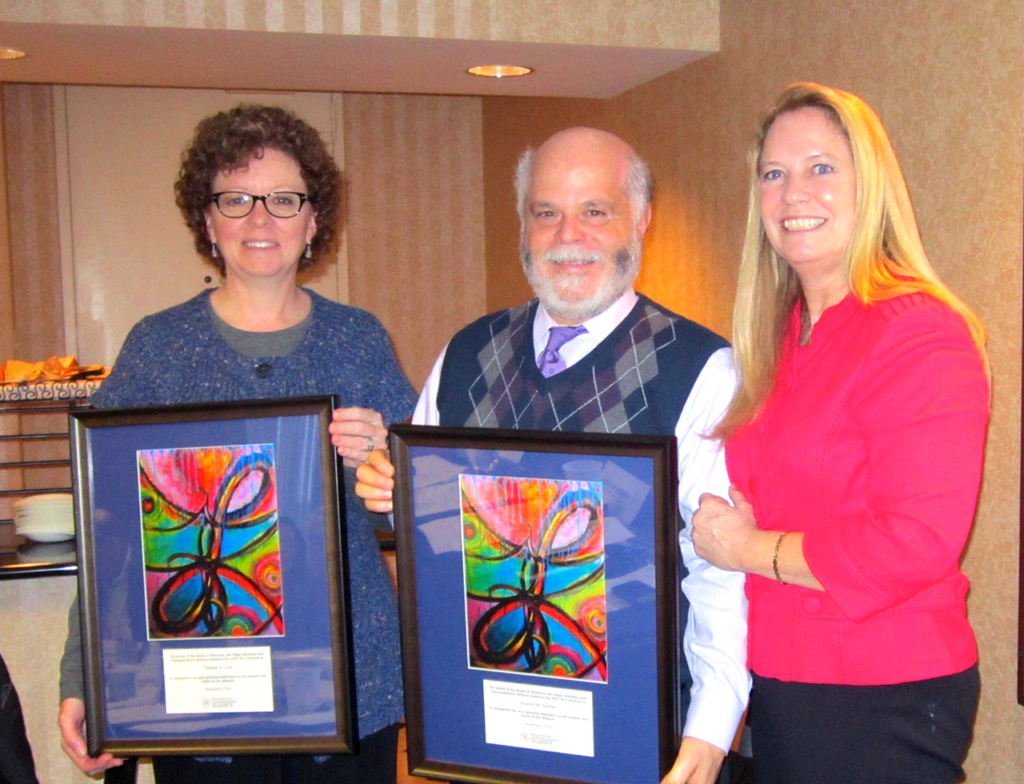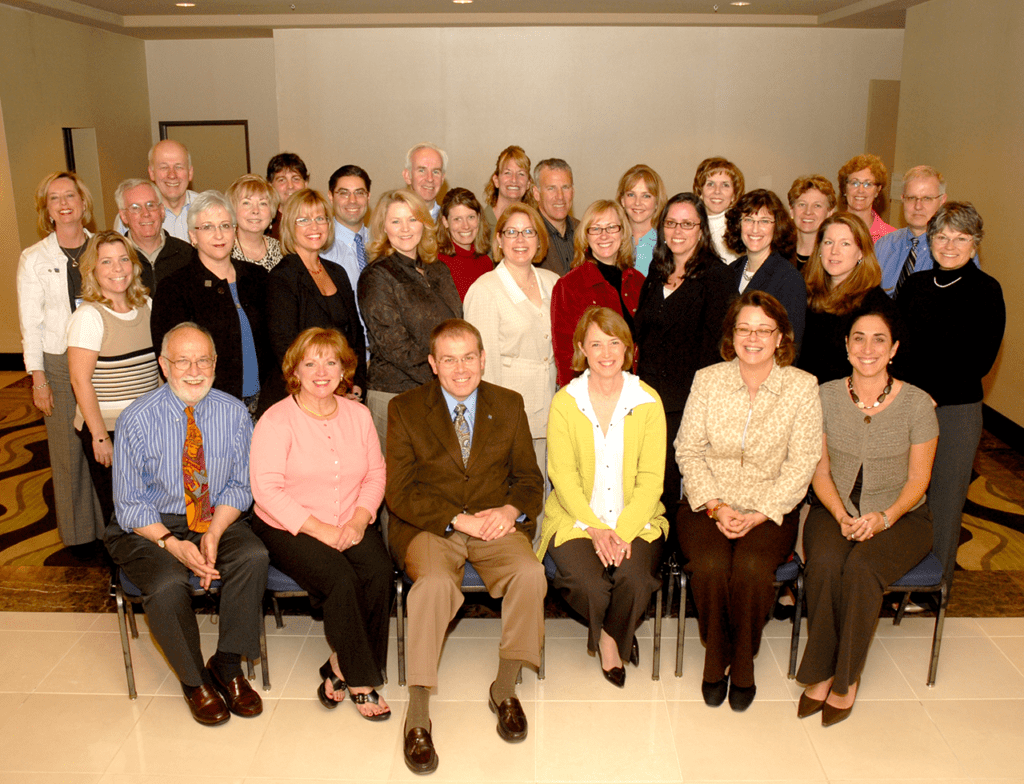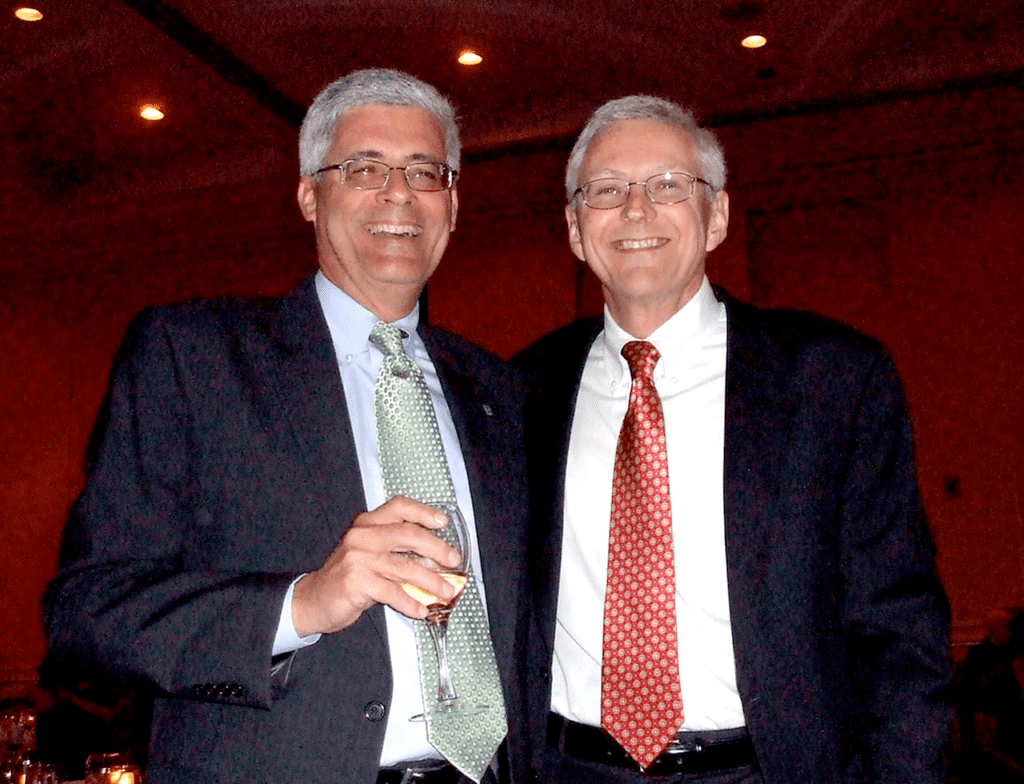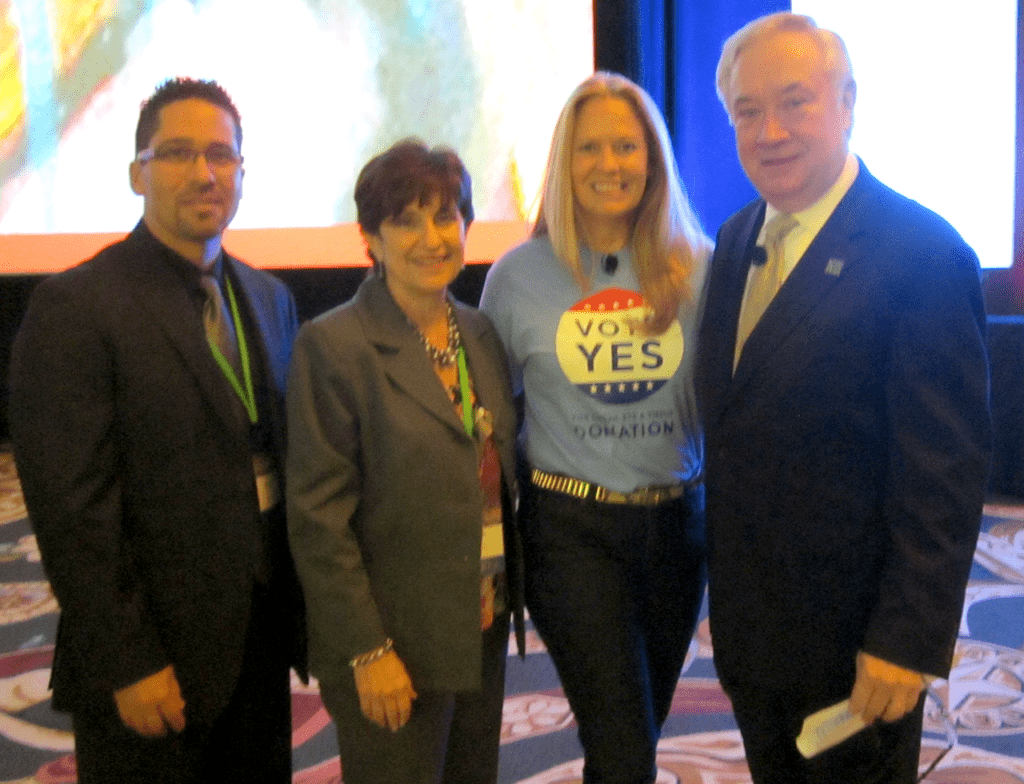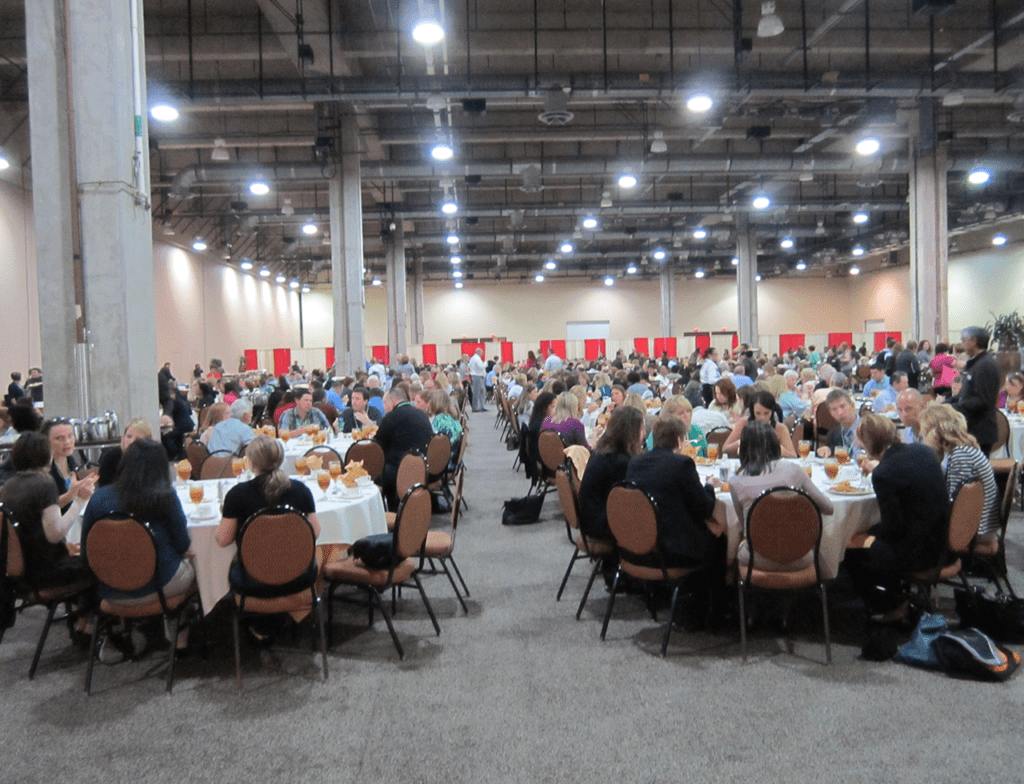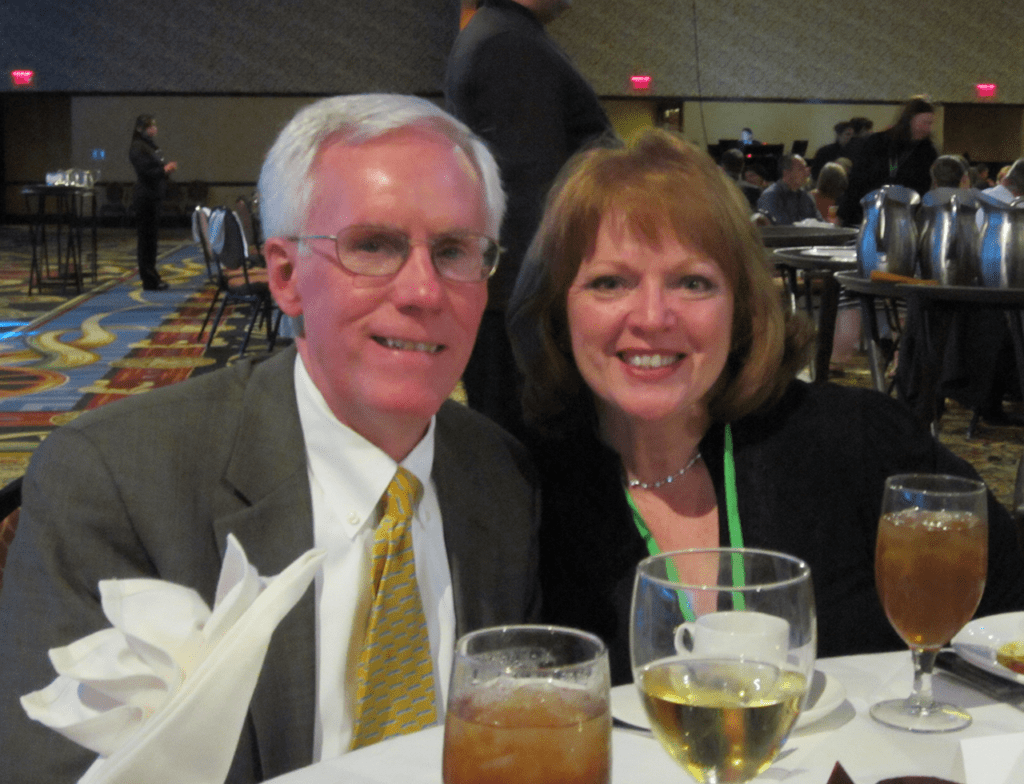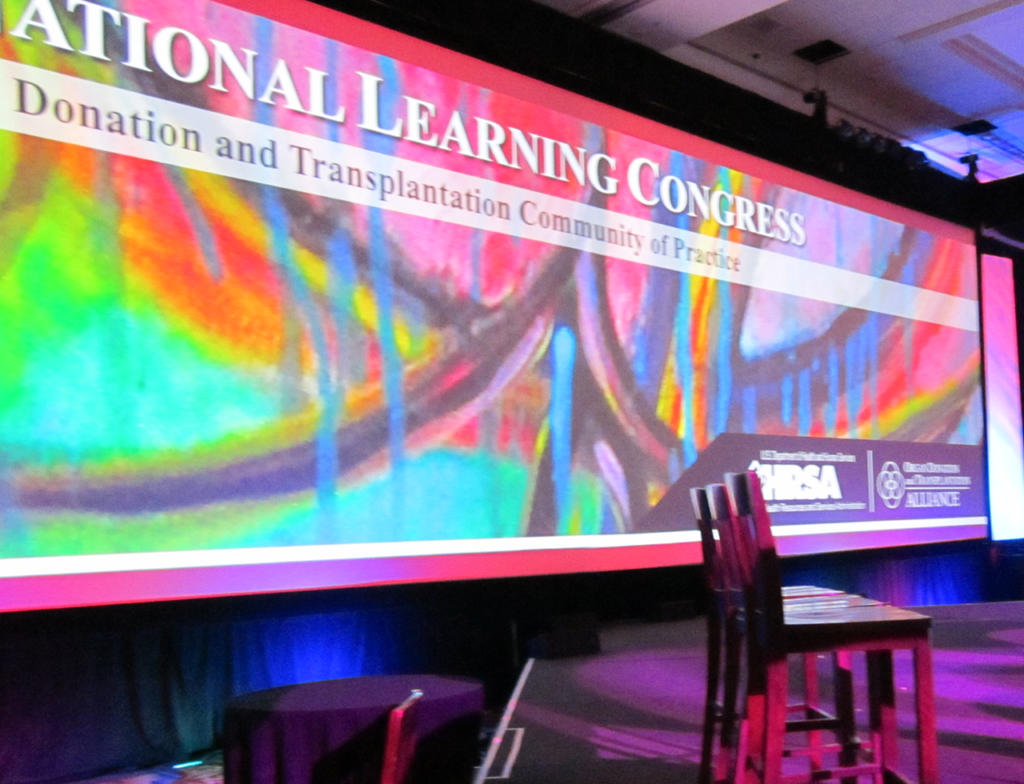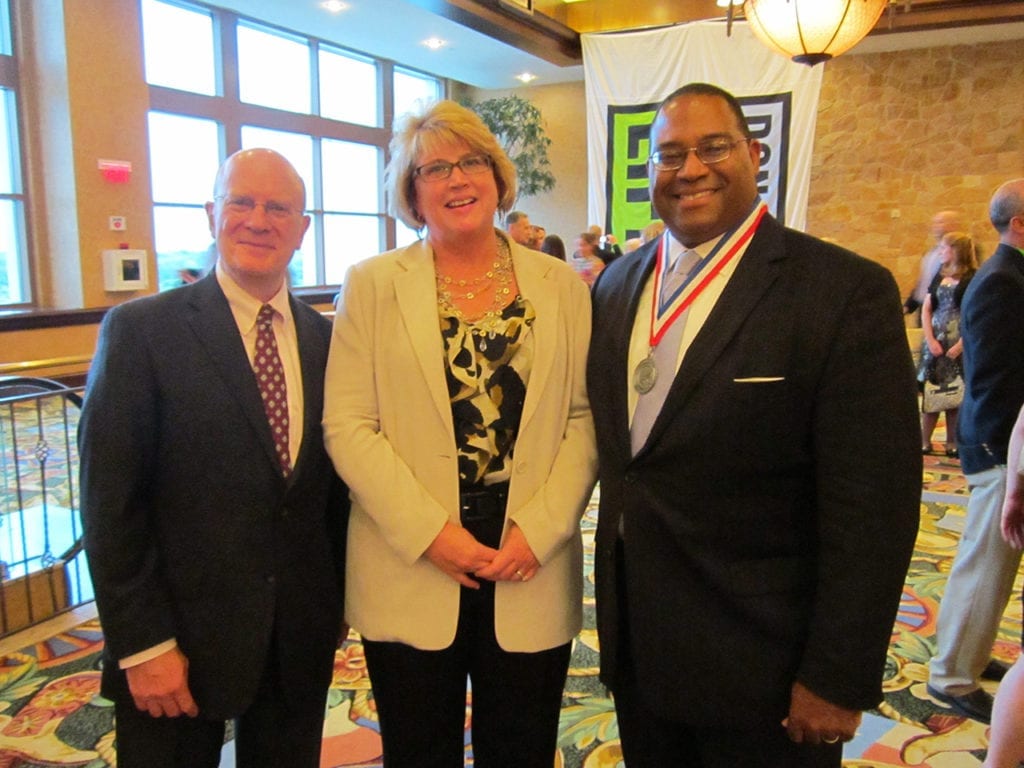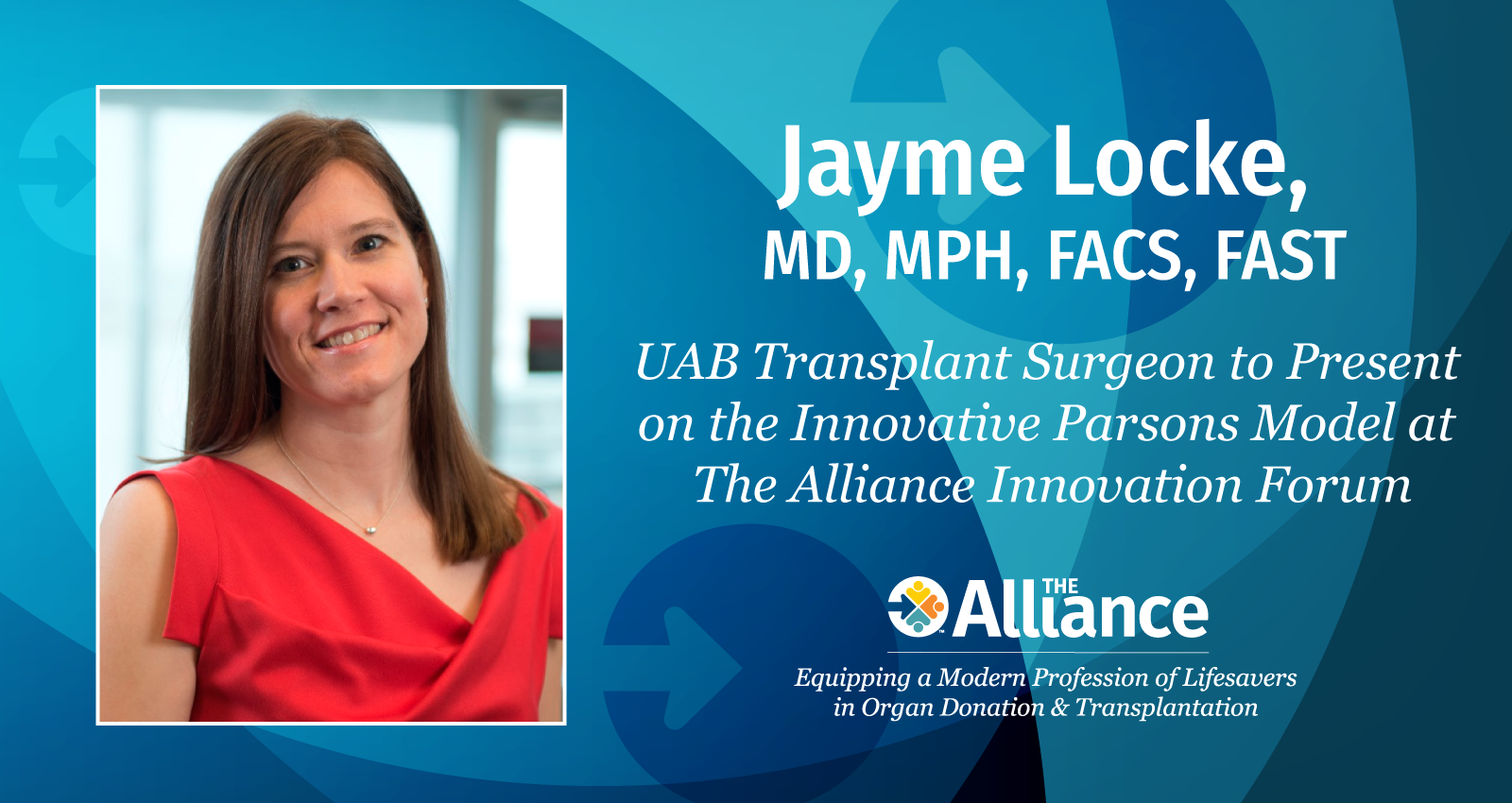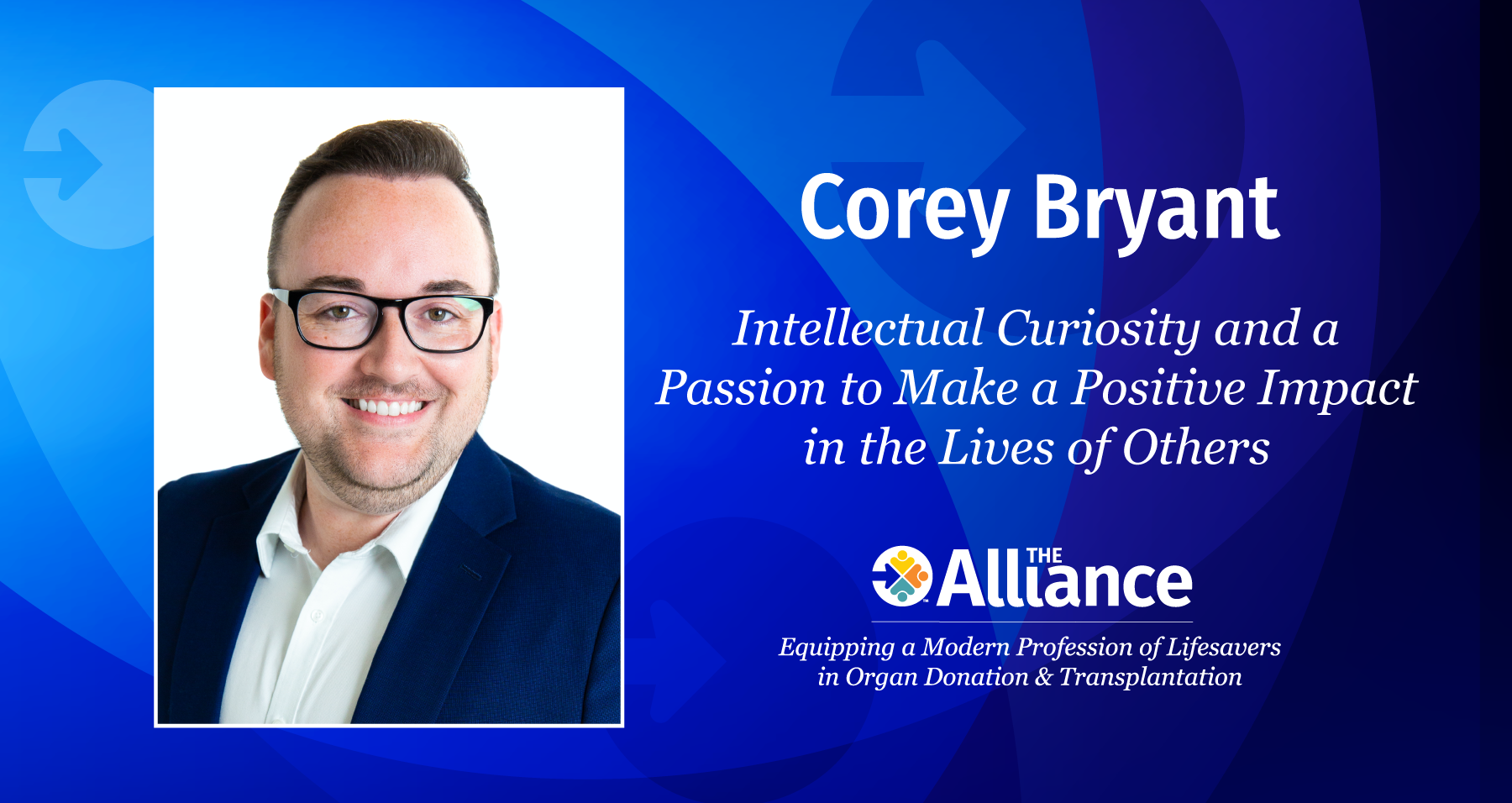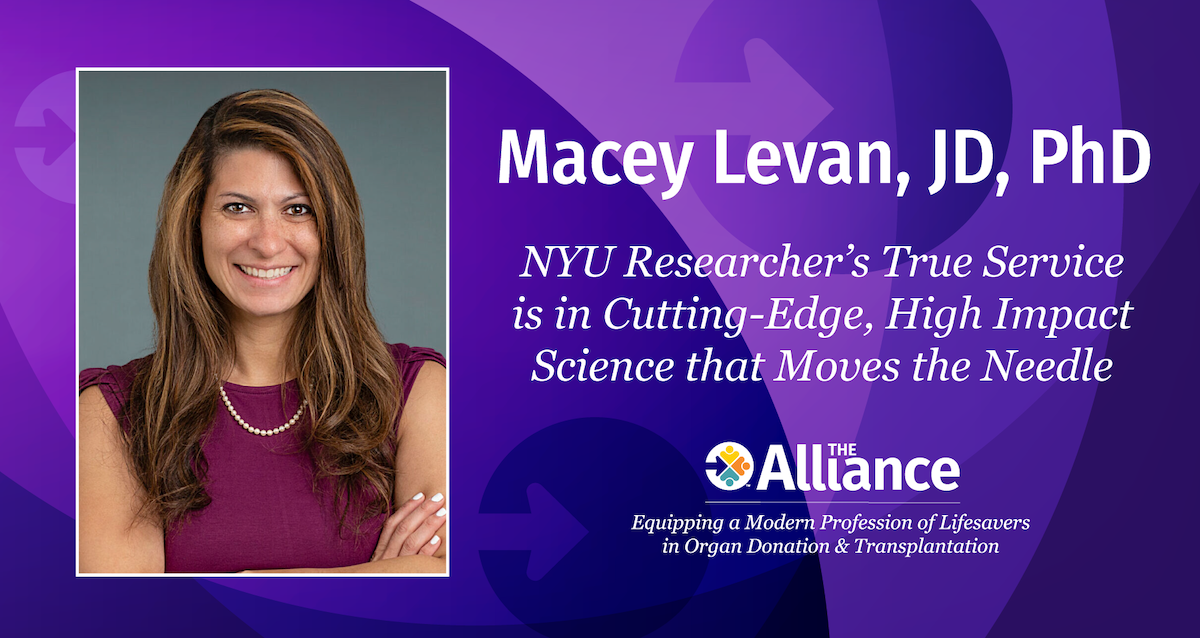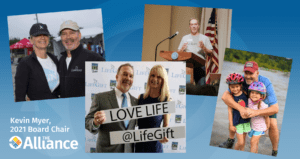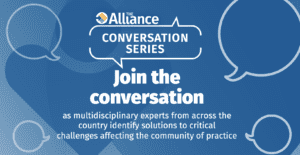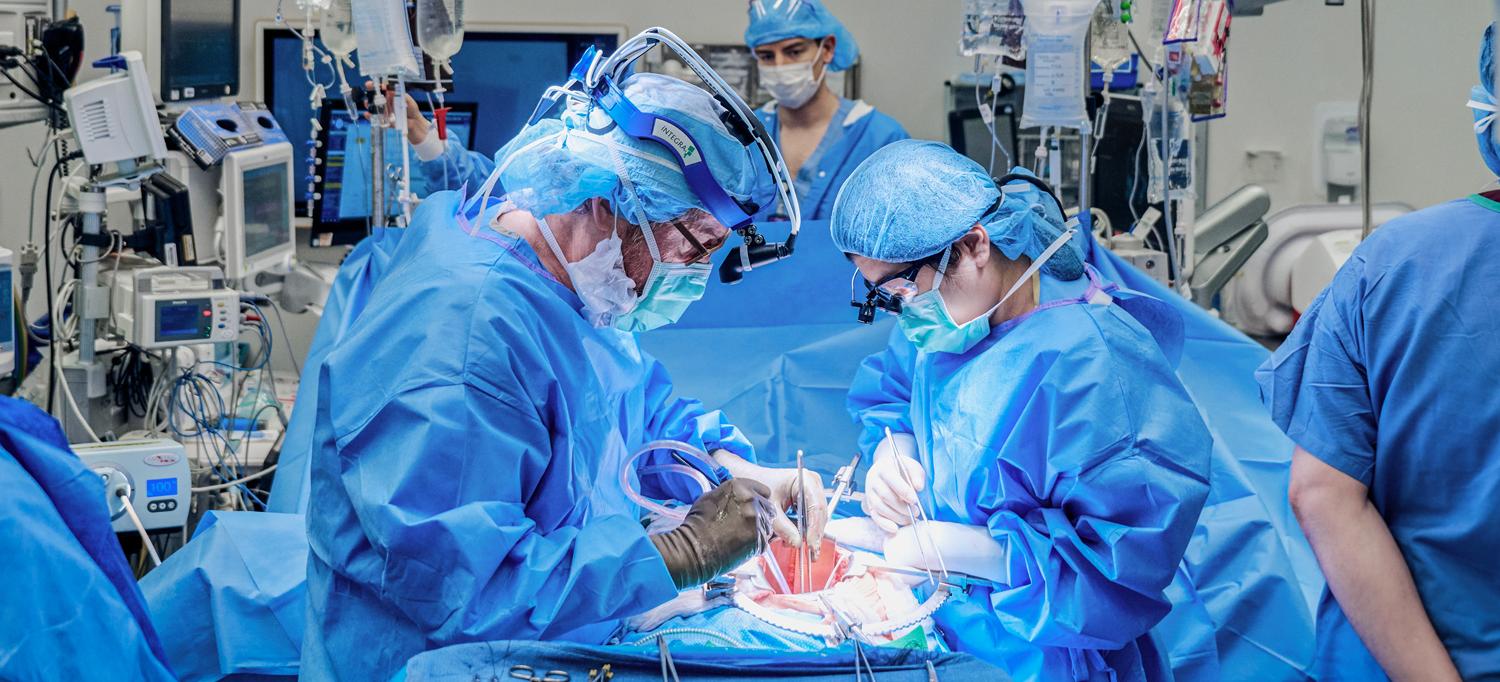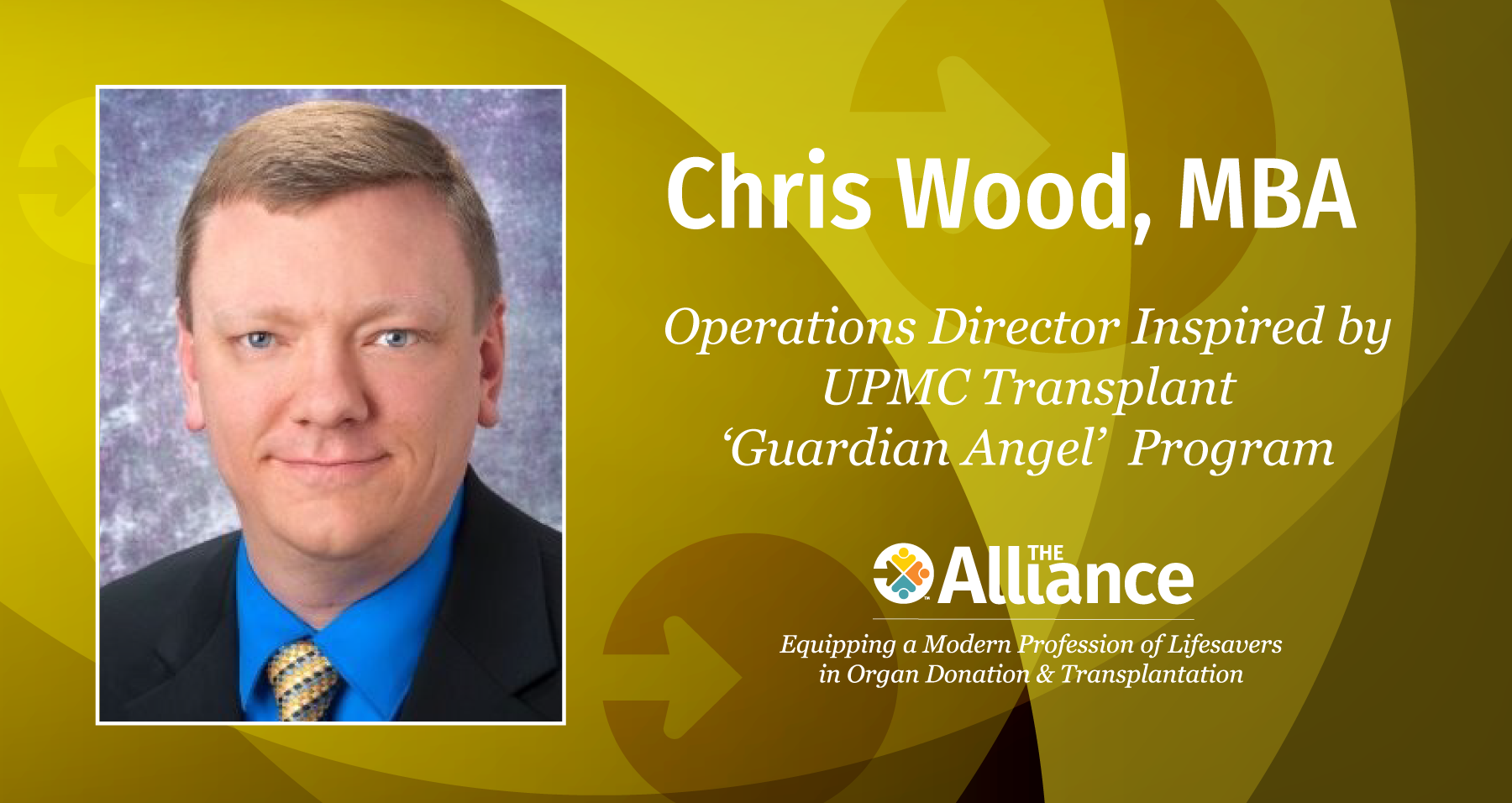It was work on a bold goal to double organ donation rates to save more lives. It was work that connected people and organizations from across the continuum of organ donation and transplantation in a collaborative spirit to improve. It was work that changed hearts and minds. It was work that had to continue.
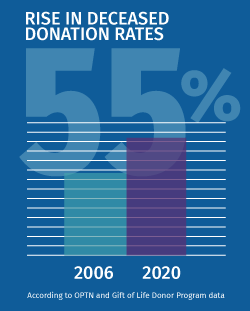
And so, the Organ Donation and Transplantation Alliance was chartered on February 21, 2006, to continue the work of the federally sponsored Organ Donation and Transplantation Breakthrough Collaboratives. The Alliance is celebrating 15 years of bringing hospitals, organ procurement organizations, and transplant centers together to advance and energize the community that works to save the lives of patients on the transplant waiting list. The Alliance is the convener and leader of that work to advance life for all and has seen organ donation rates increase 55 percent during its existence, from 8,107 deceased donors in 2006 to 12,588 in 2020.
That growth also reflects an impressive increase in donation after circulatory death (DCD) donors from 642 donors in 2006 to 3,223 in 2020. The year-over-year growth in DCD donation has dramatically impacted the number of potential donors and lives saved per year. In fact, DCD donors represented more than 25 percent of all deceased donors last year.
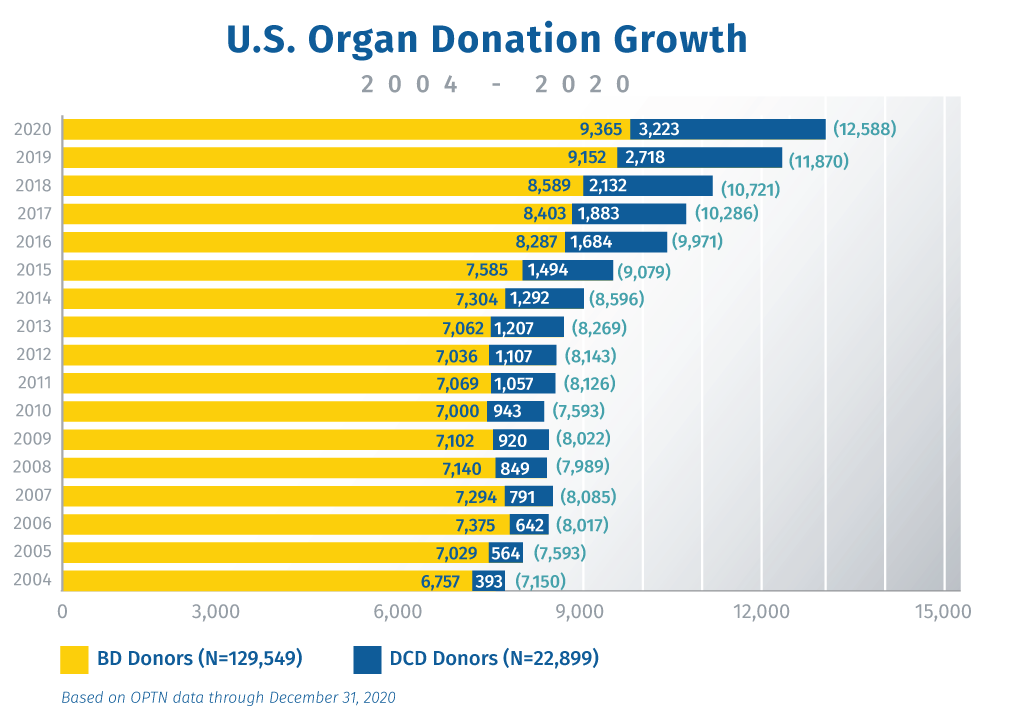
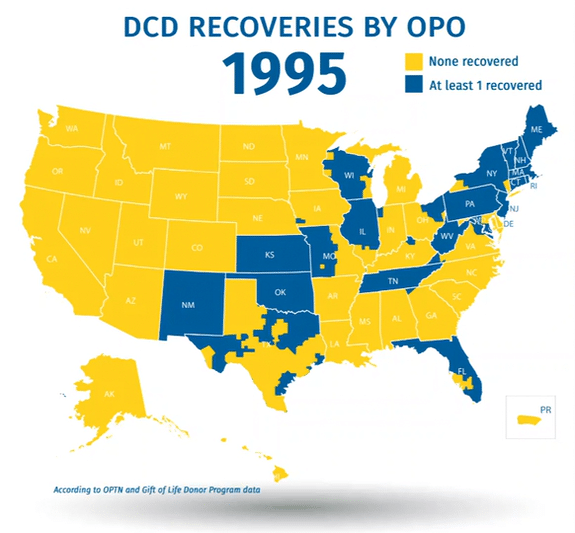

“The Alliance is more important now than ever as we provide a platform for the key players in organ donation and transplantation to come together to share solutions and to tackle new challenges.”
— KARRI HOBSON-PAPE, Executive Director of the Alliance
It was a bold goal that started it all.
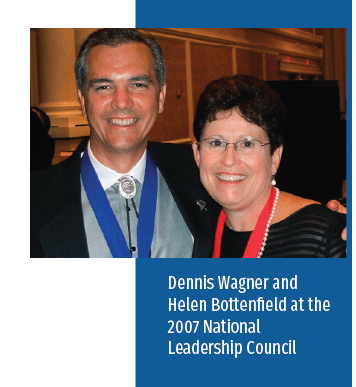 In April 2003, Health & Human Services Secretary Tommy Thompson joined with key national leaders and practitioners from the nation’s transplantation and hospital communities to launch the Organ Donation Breakthrough Collaborative. The Collaborative’s bold goal was to save or enhance thousands of lives a year by spreading known best practices to the nation’s largest hospitals, in an effort to achieve organ donation rates of 75 percent or higher. At that time, the national rate of eligible donors to actual donors was 48 percent.
In April 2003, Health & Human Services Secretary Tommy Thompson joined with key national leaders and practitioners from the nation’s transplantation and hospital communities to launch the Organ Donation Breakthrough Collaborative. The Collaborative’s bold goal was to save or enhance thousands of lives a year by spreading known best practices to the nation’s largest hospitals, in an effort to achieve organ donation rates of 75 percent or higher. At that time, the national rate of eligible donors to actual donors was 48 percent.
“To set a bold goal, to step out there and say, ‘we’re not going to try to increase by one percent, we’re going to increase to where 75 percent of the time we are going to convert potential donors to actual donors,’ that’s really stepping out,” says Helen Bottenfield, who served as a member of the Collaborative leadership team as a consultant and later as Executive Director of The Alliance from 2008-2013.
“You want to focus on doing more of what works and the rest of it will cure itself,” says Dennis Wagner, a former director at the Health Resources and Services Administration (HRSA). Wagner was one of the leaders of the Collaboratives and a founder of The Alliance.
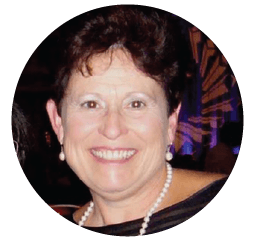
“To set a bold goal, to step out there and say, ‘we’re not going to try to increase by one percent, we’re going to increase to where 75 percent of the time we are going to convert potential donors to actual donors,’ that’s really stepping out.”
— HELEN BOTTENFIELD, Collaborative Leadership Team, consultant, Director of the Alliance 2008-2013
The Breakthrough Collaboratives laid the foundation
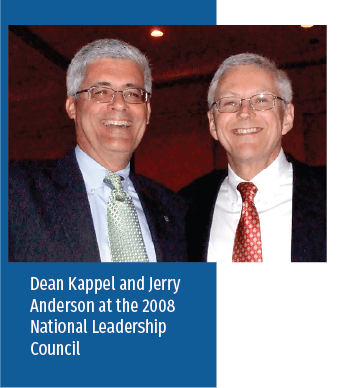 Until the Collaborative was launched in 2003, the responsibility for a hospital’s organ donation performance rested almost solely on the shoulders of the organ procurement organization (OPO) serving that institution. The three “estates” – hospitals, OPOs, and transplant centers – often operated in silos. The Collaborative changed this culture to one focused on collaboration and team effort, partnering OPOs and hospital staff and making bold offers and bold requests of each other to mutually serve the donor, the donor’s family, and organ recipients.
Until the Collaborative was launched in 2003, the responsibility for a hospital’s organ donation performance rested almost solely on the shoulders of the organ procurement organization (OPO) serving that institution. The three “estates” – hospitals, OPOs, and transplant centers – often operated in silos. The Collaborative changed this culture to one focused on collaboration and team effort, partnering OPOs and hospital staff and making bold offers and bold requests of each other to mutually serve the donor, the donor’s family, and organ recipients.
The Collaborative Teams demonstrated that, if all parties involved follow proven best practices, the supply of healthy organs available to patients in need would increase dramatically. “The Collaborative was the introduction of what I would refer to as performance improvement into the OPO business,” says Dean Kappel, president emeritus of Mid-America Transplant, and one of the founders and first board chair of The Alliance.
Over the next five years, a series of Breakthrough Collaboratives on organ donation and transplantation were conducted as well as National Learning Congresses that attracted up to 1,800 participants. The Collaboratives were under the direction of HRSA and used a model developed by the Institute for Healthcare Improvement. They were led by Wagner from 2003-2006, and later by Virginia McBride, now the executive director of Orlando-based OurLegacy.
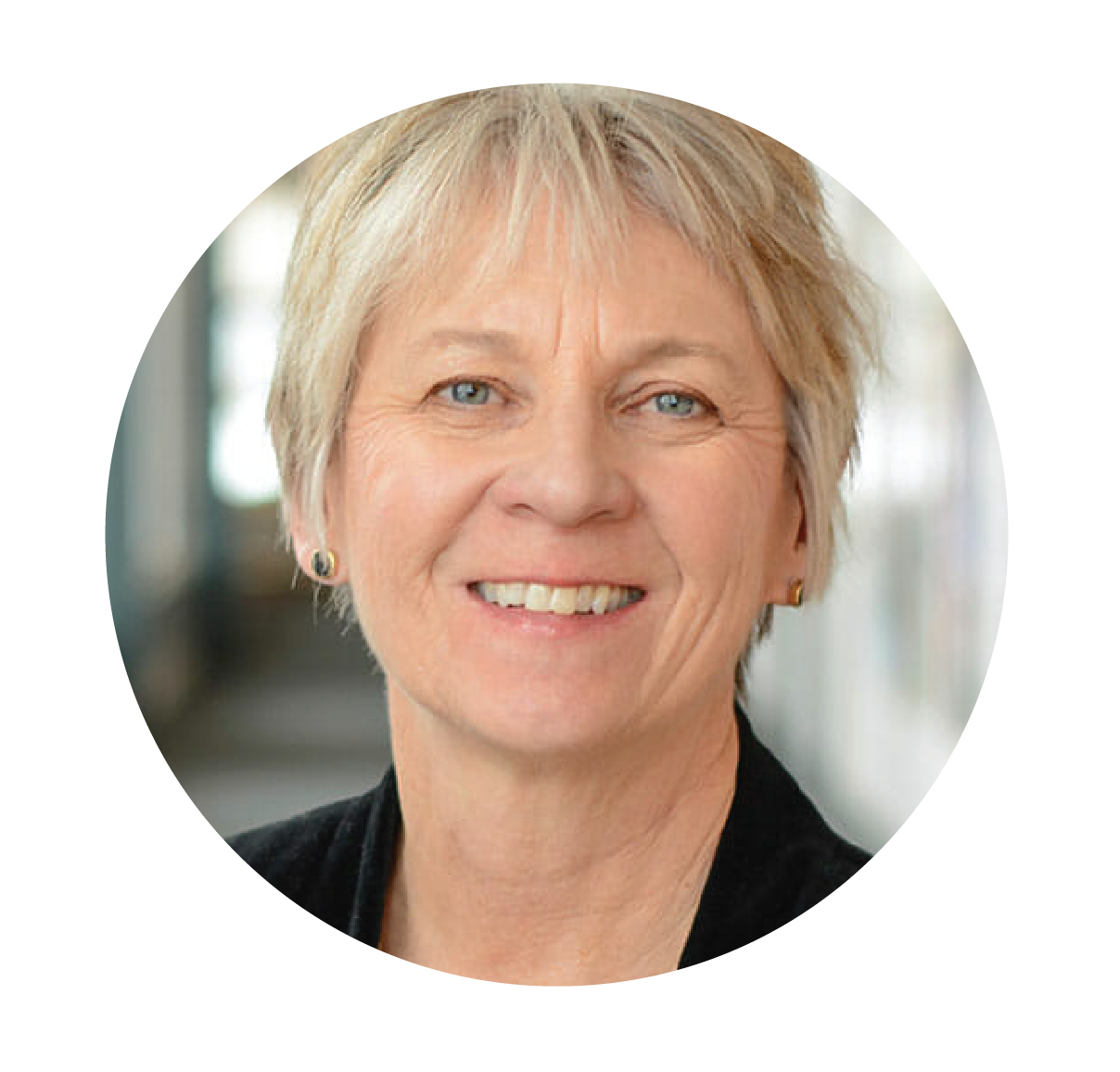
“When you were at the Collaborative, you couldn’t walk away from that meeting without being personally touched.”
— SUSAN GUNDERSON, CEO of LifeSource; Alliance Board member, 2006-2018
All teach, all learn
Howard Nathan, president and CEO of the Philadelphia-based Gift of Life Donor Program and one of the original Alliance Board members, is quick to credit the contributions of Don Berwick and the Institute for Healthcare Improvement with bringing the ‘all teach, all learn’ methodology to the Collaborative. “The Institute’s involvement was extremely important for the credibility of the Collaboratives,” says Nathan. “They actually have a methodology for ‘all teach, all learn’ and they brought all the people together believing that things can change. You have to believe that things can change.”
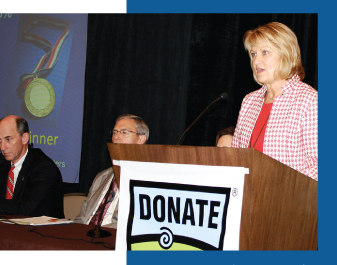 “When you were at the Collaborative, you couldn’t walk away from that meeting without being personally touched, that you can make a difference and together we can make a difference,” says Susan Gunderson, CEO of LifeSource and Alliance board member from 2006-2018. “And people’s lives literally are on the line because of what we do.”
“When you were at the Collaborative, you couldn’t walk away from that meeting without being personally touched, that you can make a difference and together we can make a difference,” says Susan Gunderson, CEO of LifeSource and Alliance board member from 2006-2018. “And people’s lives literally are on the line because of what we do.”
“It was work that changed hearts and minds,” says Bottenfield. “Bringing community and national partners to the table helped all of us to see how your work affected my work and my work affected somebody else’s work. And I think it gave everyone a kind of permission to fail; to try new things and see what the outcome would be and learn from those failures as opposed to being afraid of those failures.”
The Collaboratives were credited with quadrupling the growth rate of organ donation over four years. Between October 2003 and September 2006, the number of U.S. organ donors increased 22.5 percent, an increase 4-fold greater than the 5.5 percent increase measured over the same number of years in the immediate pre-Collaborative period. Additionally, the number of hospitals that achieved or surpassed the Collaborative’s goal of a 75 percent donation rate increased more than sevenfold, from 55 to 392, from 2003-2007.
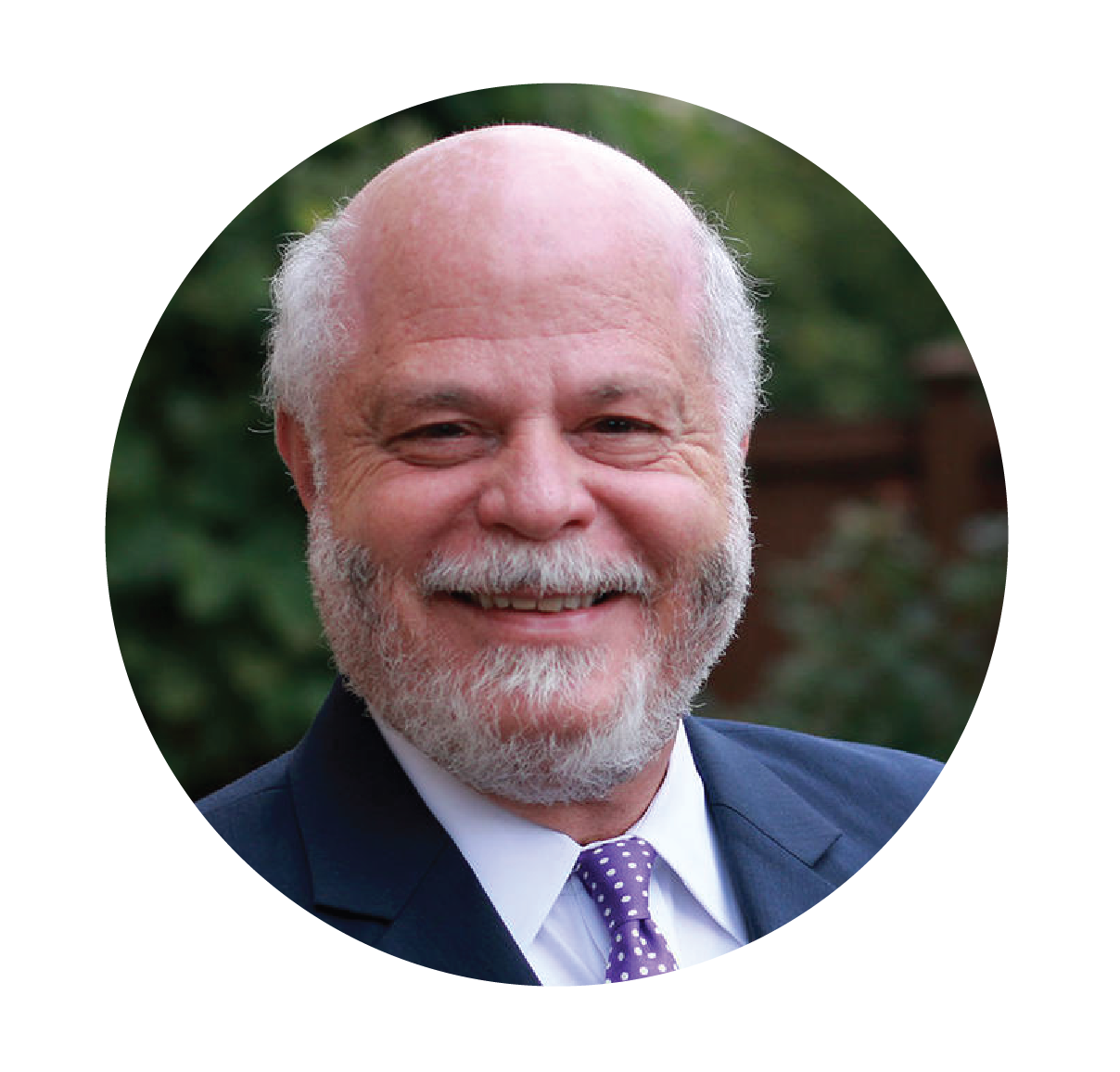
“You have to continue to have this enthusiasm to try to improve people’s lives. If you don’t have that enthusiasm and thirst for knowledge, you go stale and then things don’t change and things don’t improve. So I believe The Alliance is a key component in the continuous improvement of donation and transplantation in the field.”
— HOWARD NATHAN, President and CEO, Gift of Life Donor Program; 15-year Alliance Board member
What will you do by Tuesday? A sense of urgency continues
The process improvement model used in the Collaborative created energy and excitement as well as a sense of urgency, “We still talk about ‘what are you going to do by Tuesday’,” says Jan Finn, president & CEO, Midwest Transplant Network. “There was a desire for quickness. And don’t wait around because we need to produce results.” Finn, who served on the Collaborative as a faculty member and later served as the National Improvement Leader for HRSA is currently the president-elect of the Association of Organ Procurement Organizations (AOPO).

“We still talk about ‘what are you going to do by Tuesday’. There was a desire for quickness. And don’t wait around because we need to produce results.”
— JAN FINN, President & CEO, Midwest Transplant Network; Current Alliance Board member
“The mantra when we would leave a meeting on a Friday was, ‘what are you going to do by Tuesday?’ So it wasn’t, ‘what are you going to do by the end of the quarter?’ It was, ‘what are you going to do before the end of next week?’ And believe it or not, people made it happen,” says Bottenfield.
Wagner and others are quick to point out that many national organizations stepped up to make the Collaboratives successful. The Joint Commission added a question about organ donation rates to its hospital review survey and many other national organizations contributed their expertise and support.
The sharing of best practices in the Collaboratives included donation after circulatory death (DCD), which was rare in 2003. “When best practices about donation after circulatory death (DCD) was started through the Collaborative, it really took off,” says Nathan. In 2003, DCD donors accounted for four percent of all donors; now DCD donations account for 26 percent of all donors.
“We were inviting faculty to join the Collaborative and we’d get calls from related national organizations who said they wanted to get involved,” says Wagner. “And it was this group of national organizations and leaders who were committed to the same goals as Tommy Thompson and the Donation Breakthrough Collaborative but who had these other platforms that they could align with the goals of the collaborative and use to achieve the purposes of the collaborative. And in this manner, the Leadership Coordinating Council was born.”
The Leadership Coordinating Council met every four or five months for three years.
COMMITTING TO THE SAME BOLD GOALS
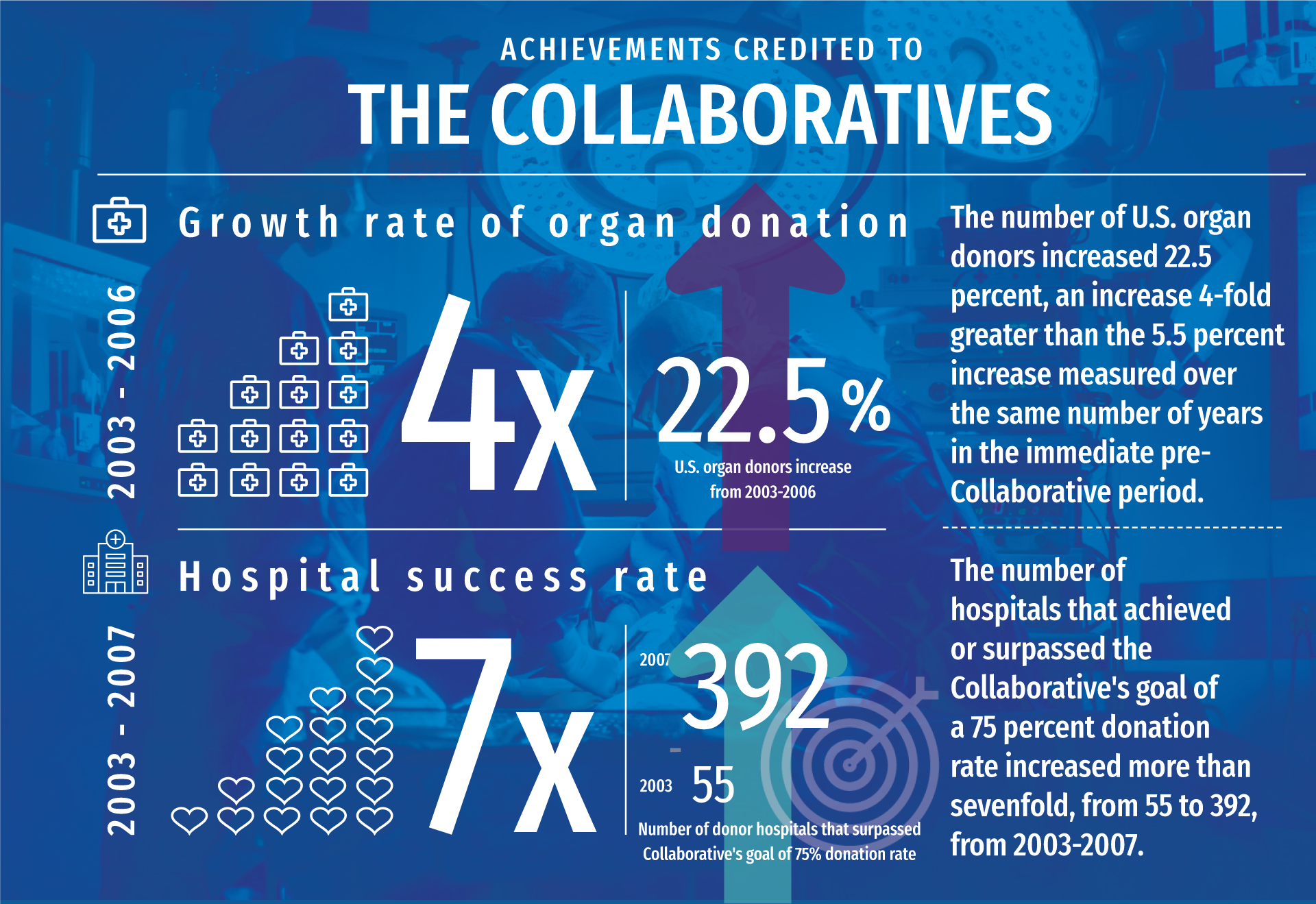
The Collaboratives wind down and The Alliance is born
As the Collaboratives began to wind down, some of the key leaders started wondering how to keep the work going to find the best ways of changing the nature of organ donation and transplantation in the United States when the federal government was no longer involved. “I did everything I could to encourage this discussion about formalizing the Leadership Coordinating Council into what became The Alliance,” says Wagner. “And I’ll say during the 33 plus years that I worked for the federal government, this is how influential national associations get born.”
“I became really interested in looking at how do we keep this work going where you can get hospital folks together and transplant center people together and neurointensive doctors involved and transplant surgeons… everybody who had a stake in this work at the table,” says Kappel. He went on to raise the seed money to create The Alliance – nearly $2 million from a handful of OPOs across the country.
Continuing the improvement process used by the Collaboratives was key to The Alliance founders. “The roots of The Alliance are in the Organ Donation Breakthrough Collaborative, focused on this idea of bringing together the teams that actually made things happen, learning from their successes, learning from their challenges, and then giving them the opportunity to change,” says Dr. John Magee, Jeremiah & Claire Turcotte Professor of Transplant Surgery at the University of Michigan. Dr. Magee also served as chair of The Alliance Board of Directors for three years and currently serves as the American Society of Transplant Surgeons (ASTS) representative to The Alliance Board.
Joseph S. Roth, president and CEO of the New Jersey Organ and Tissue Sharing Network, was a founder of The Alliance and served on the board from 2006-2010. Roth echoes Dr. Magee’s sentiment. “The initial drive in developing The Alliance was that we would maintain the momentum and grow the momentum created by the Collaboratives.”
“Every step of the way, the Collaboratives were very much a national community of practice in action together making requests and offers. And that’s essentially the way The Alliance was birthed as well. It was a milieu of people with a common goal and a common vision working together that ultimately caused it to happen,” says Wagner.
Mentoring & Collaboration Were Key
Mentoring was another key aspect of the Collaborative experience that The Alliance founders wanted to make sure would continue. “You would not have had the opportunity to have mentors at the level that we did as OPO CEOs if it weren’t for the Collaboratives, and if it weren’t for The Alliance driving the Collaborative model forward,” says Charlie Alexander, president and CEO of The Living Legacy Foundation of Maryland.
The Leadership Councils, which drove the creation of The Alliance, have continued as key activities of the organization today. “I think one of the neat things about The Alliance is while there’s the board of directors, that isn’t really where all the action happens,” says Dr. Magee. “A lot of it happens in the leadership councils, which provide an opportunity for many people to get engaged in making a difference.”
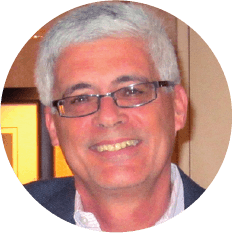
“The work of The Alliance is always designed to try to educate, increase collaboration and drive improvement across the entire system.”
— DEAN KAPPEL, President Emeritus, Mid-America Transplant; a founder and first board chair of The Alliance
The Alliance continues work on the bold goal
The Alliance’s work to ensure a continued national commitment to increasing organ availability and eliminating deaths on transplant waiting lists ensures that the work done on the Collaborative’s bold goal is not lost.
“It comes down to why we do this work. This is about a patient who needed a transplant and they got it,” says Gunderson. “This is about a family who lost someone. But they got some healing and some legacy through the donation. The Alliance has all of the people at the table who need to be in conversation around this.”
By convening members across the community of practice to share information, The Alliance provides a platform to identify emerging concepts and innovative practices and develops resources and educational programs that continue to transform the work of the organ donation and transplantation community of practice. “We owe this work to the people that are on the recipient waiting list,” says Finn. “We are working on behalf of the donor families and we’re also working on behalf of the recipients that depend on us for a lifesaving transplant. We save lives when we all work together.”
PAST, PRESENT, FUTURE
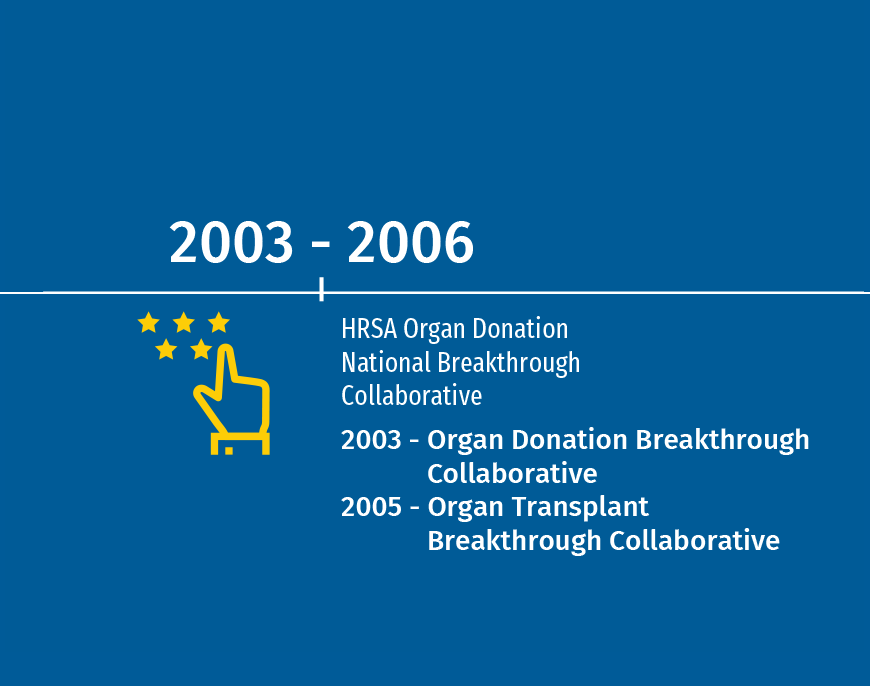
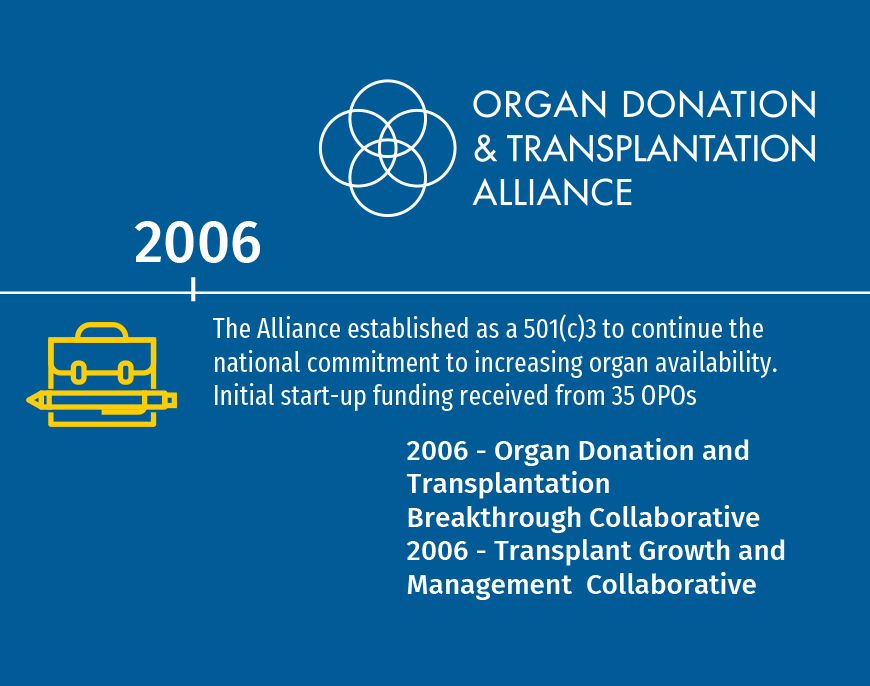
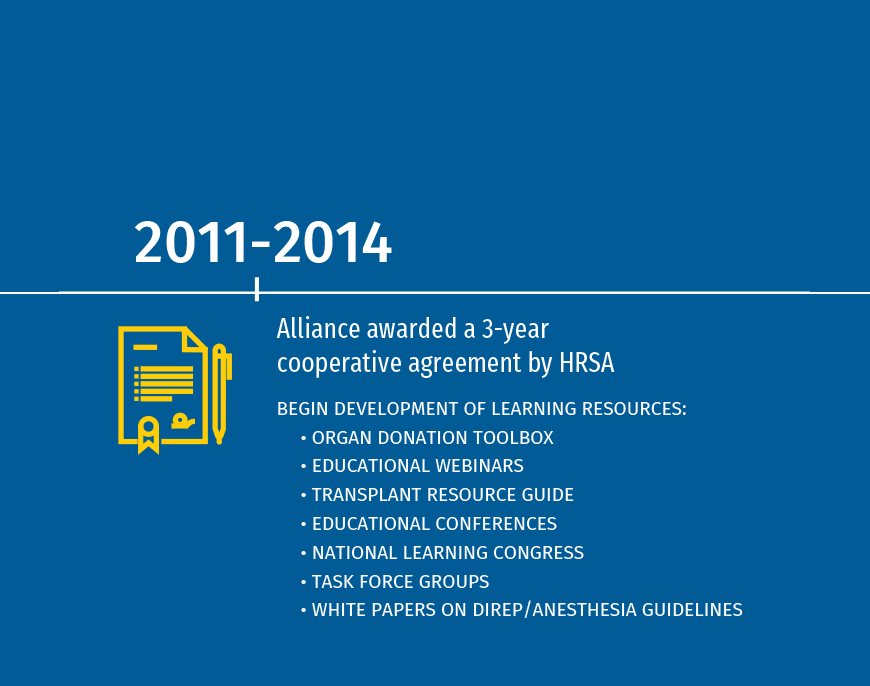
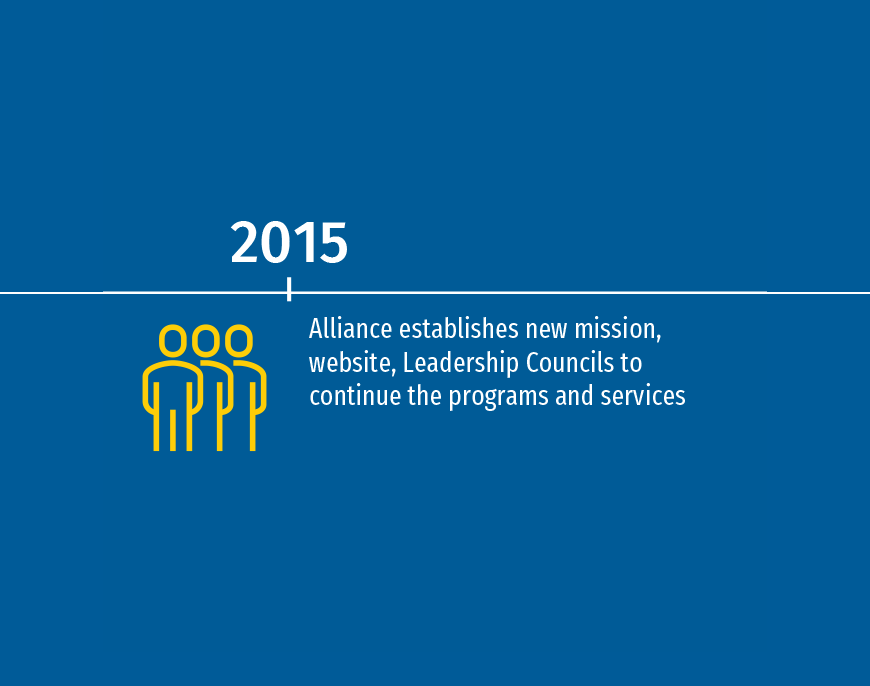
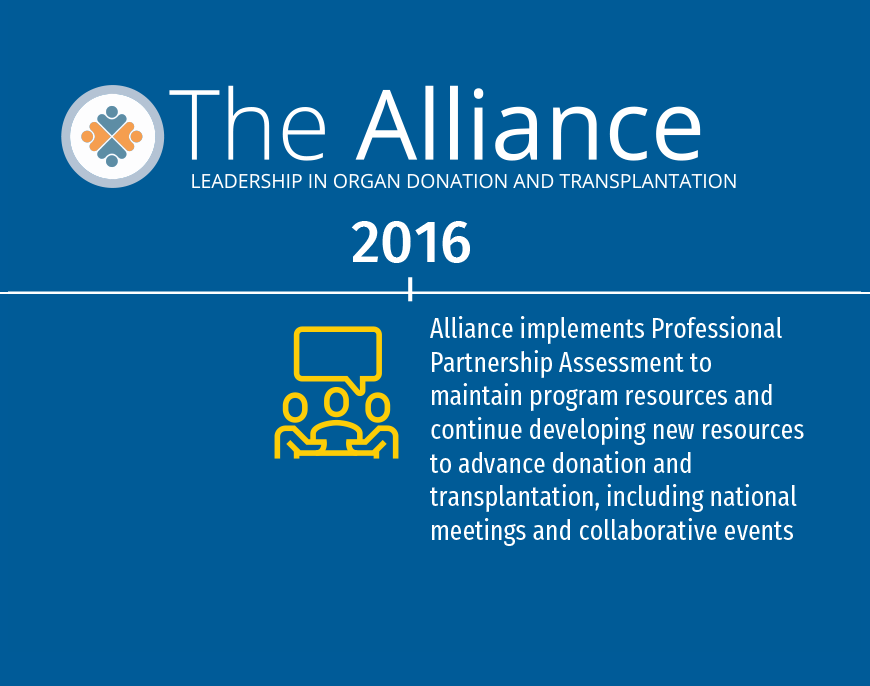
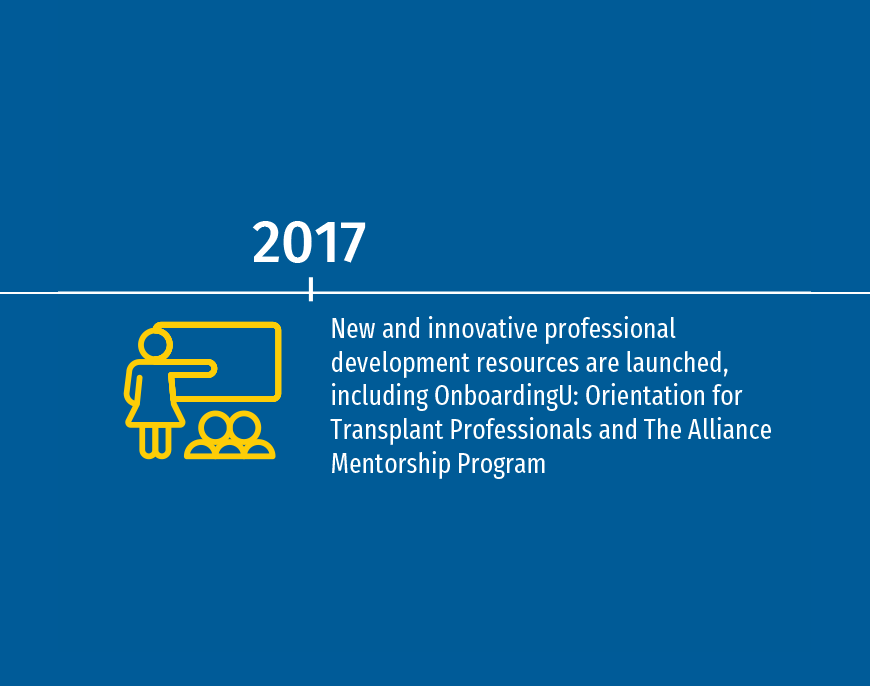

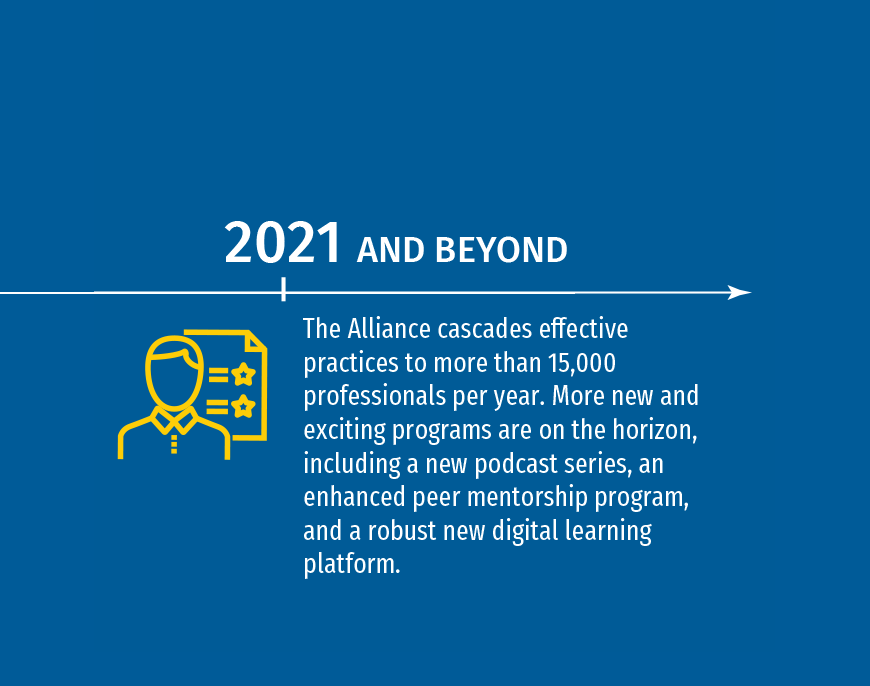
Shaping the future of donation and transplantation
Amid the rapidly evolving landscape of donation and transplantation, The Alliance’s mission, deeply rooted in those early bold goals, remains more crucial than ever.
“Our urgency is driven by more than 110,000 people who are still in need of a lifesaving transplant,” says Hobson-Pape. “To generate lifesaving results better, faster and more cost-effectively, we must face the future as a united front.”
By convening thought-leaders across the continuum and cascading effective practices to more than 15,000 people per year, The Alliance continues to tackle the critical issues that impact the field. Learning solutions dedicated to DCD research and practices, operational enhancements, relationship improvements and reducing financial barriers continue to guide specific educational opportunities in order to save more lives. Internally, The Alliance is continuously restructuring learning opportunities and online resources for greater access and use. More new and exciting programs are on the horizon in 2021, including a new podcast series, an enhanced peer mentorship program, and a robust new digital learning platform.
Under the leadership of Hobson-Pape and the Board of Directors, the strategy map for the future of The Alliance has been tooled into three mission-driven strategic pillars:
- Community Collaboration: driving community collaboration for greater sharing among thought leaders in the field
- Innovation Sharing: providing effective practices, emerging ideas, innovative approaches and interdisciplinary perspective through engaged learning solutions
- Enhanced Learning Experiences: cascading knowledge through improved access and a comprehensive learning resource for the organ donation and transplantation community of practice
“These core pillars demonstrate our commitment to work beyond our respective boundaries, tighten our collective efforts, and empower the community of professionals that we serve,” says Kevin Myer, 2021 Board Chair for The Alliance.
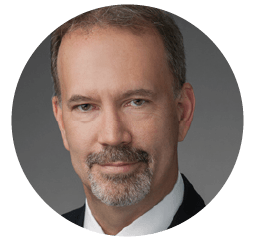
“The Board of Directors is dedicated to the continued focus on strategic opportunities in the future for our community. Through advancing the community of practice and facilitating year-over-year increases in the number of lives saved, the bold goal lives on.”
— KEVIN MYER, President & CEO, LifeGift; 2021 Board Chair for The Alliance
Invest in the future of mentorship
Just as mentorship was crucial to the success of the leaders that emerged from the Breakthrough Collaboratives, The Alliance is committed to continuing strong mentorship programs for future generations of donation and transplantation professionals, including through The Alliance Mentorship Program. Please consider a donation to support The Alliance’s ongoing mentorship and professional education programs.
Founding Year Steering Committee/Board Members:
- Dean Kappel (President)
- Sue Dunn (Vice President)
- Charles A. Mowll (Secretary)
- Joseph Roth (Treasurer)
- Howard Nathan (Assistant Treasurer)
- Patricia L. Adams, MD
- Anthony D’Alessandro, MD
- Susan Gunderson
- Walter K. Graham, JD
- Sam Holtzman
- Tracy Schmidt
- William C. Schoenhard, FACHE
- J. Richard Thistlethwaite, MD, PhD
- Dennis Wagner
Founding Year Consultants:
Special Thanks:
We extend our sincere appreciation to Charlie Alexander, Helen Bottenfield, Jan Finn, Susan Gunderson, Dean Kappel, Dr. John Magee, Howard Nathan, Joseph Roth, and Dennis Wagner for dedicating their time and historical knowledge for this story. We also extend our immense gratitude to Theresa Daly and Donna Dickt for their outstanding contributions to the archival research for this project. Finally, special thanks to Jan Gleason for her thoughtful research and authorship, and to Janet Beckley for her talented graphic design.
Photo Credits:
Helen Bottenfield, Donna Dickt, Jan Finn, Dennis Wagner




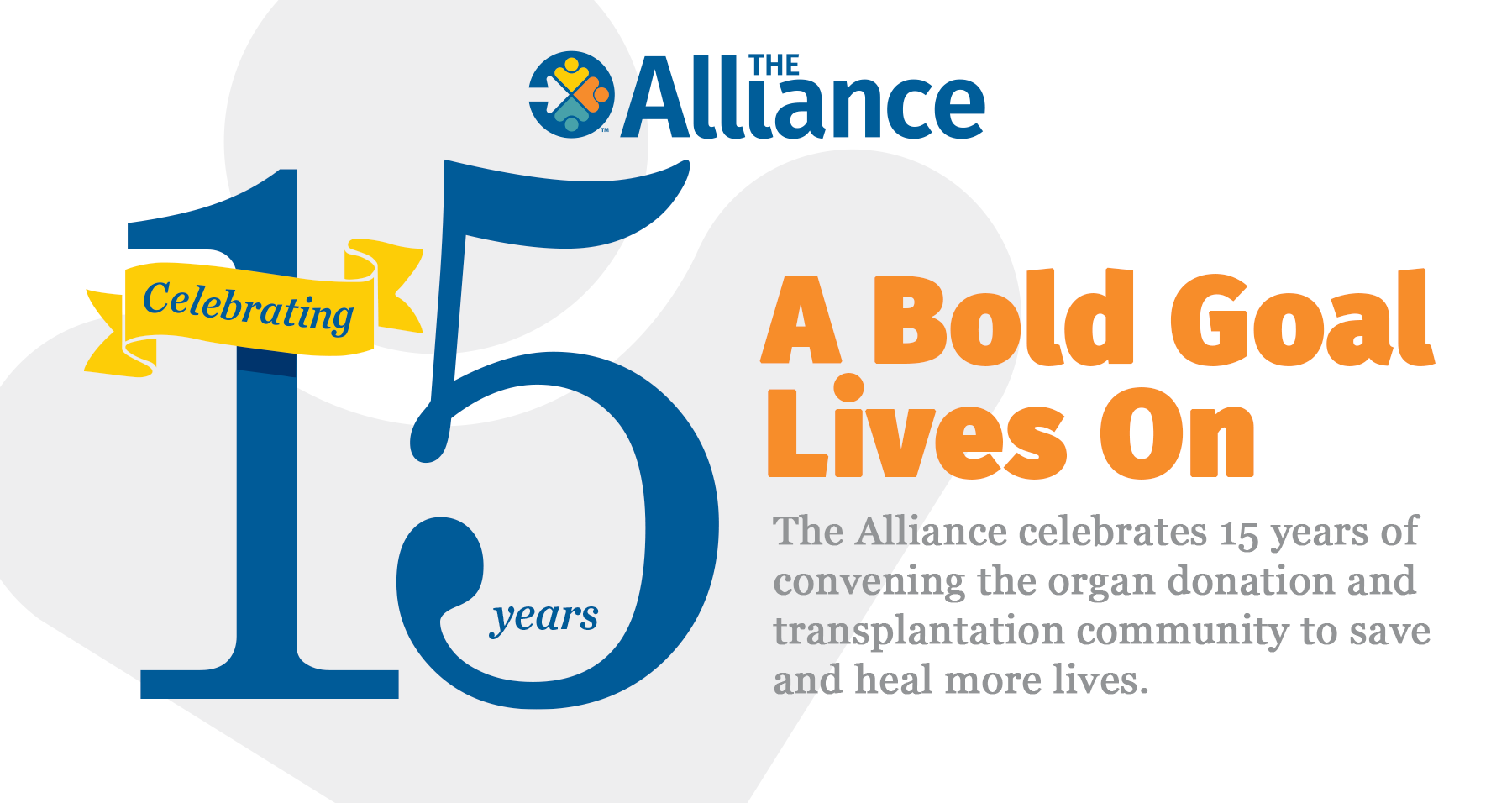
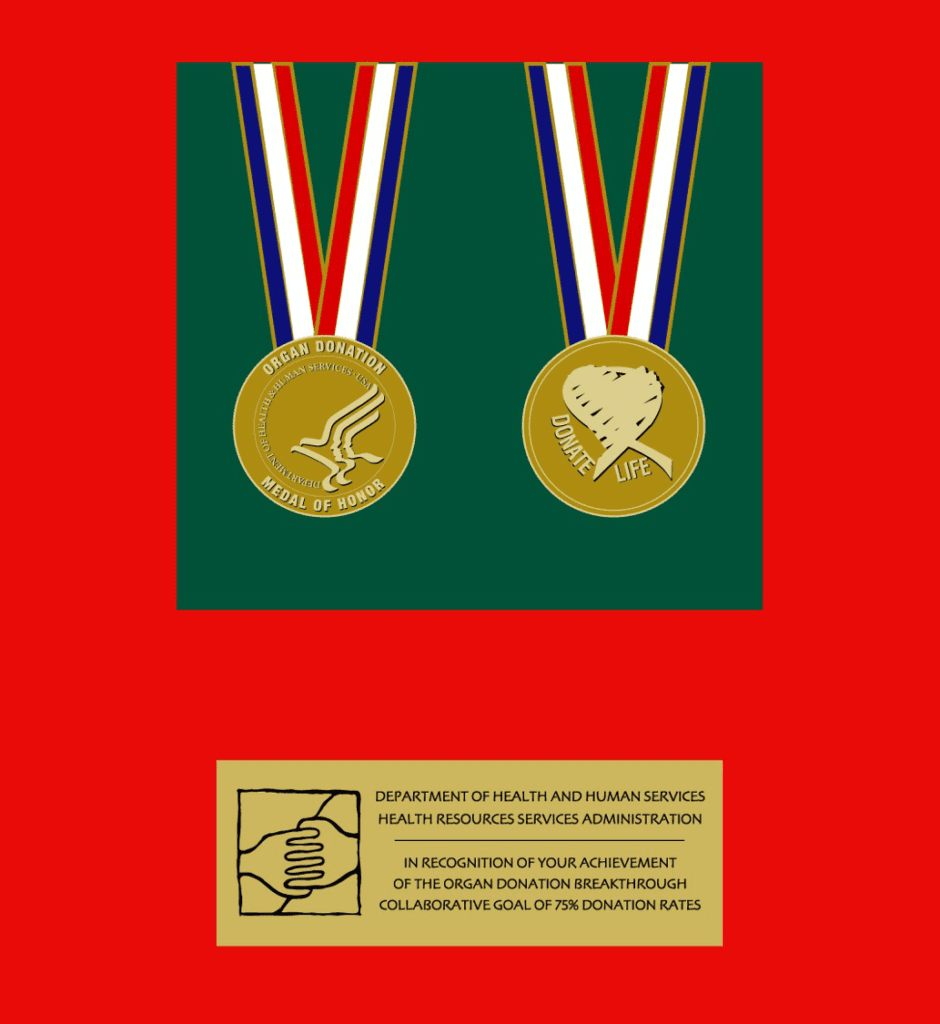
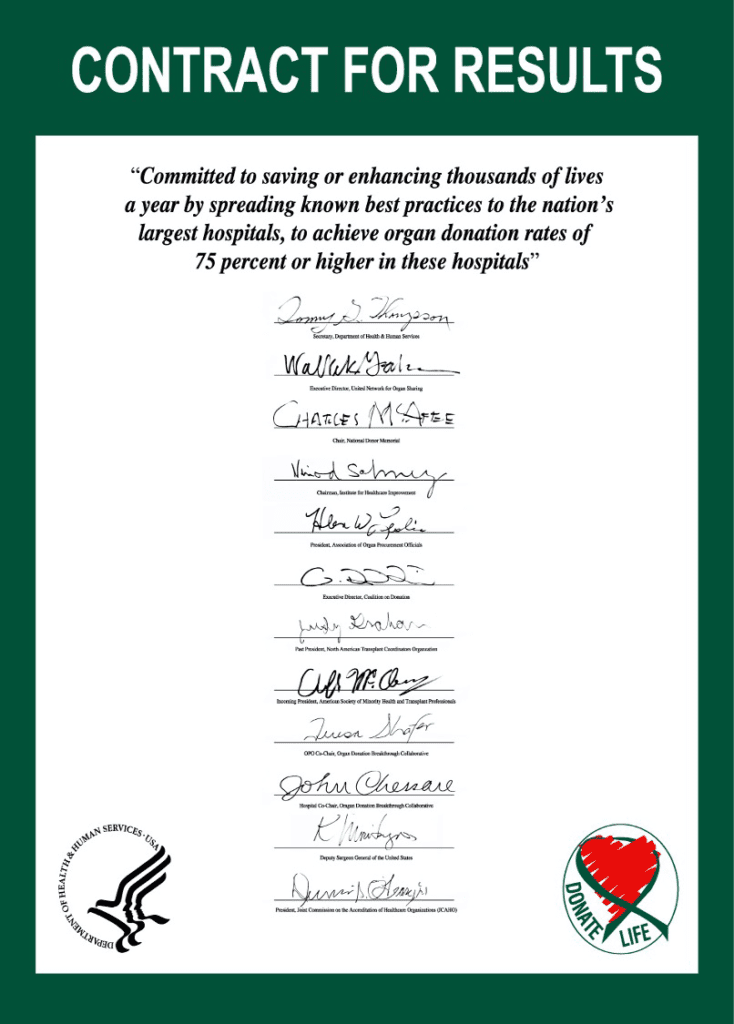
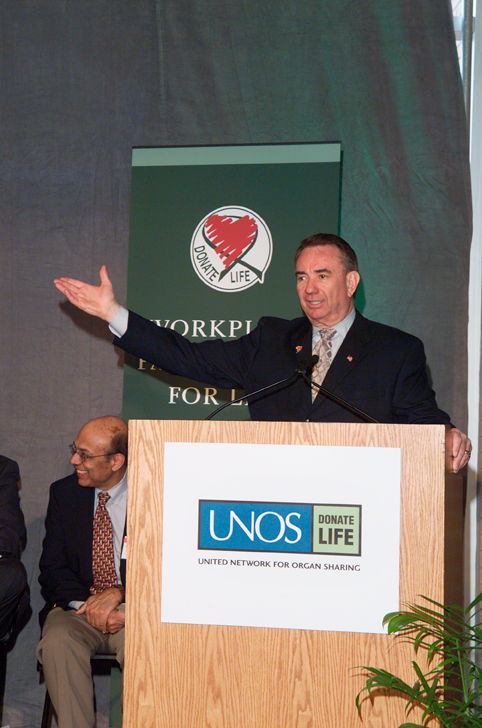
![Tgtmedalbest[1]](https://www.organdonationalliance.org/wp-content/uploads/2021/02/tgtmedalbest1.jpg)
![Partnershippublicservice(alt)[1]](https://www.organdonationalliance.org/wp-content/uploads/2021/02/partnershippublicservicealt1-1024x810.jpg)
![Nlc2medalsbest[2]](https://www.organdonationalliance.org/wp-content/uploads/2021/02/nlc2medalsbest2-1024x769.jpg)
![LS1thompson[2]](https://www.organdonationalliance.org/wp-content/uploads/2021/02/LS1thompson2.jpg)
![LS1 Room[2]](https://www.organdonationalliance.org/wp-content/uploads/2021/02/LS1-Room2.jpg)
![BURDICK D'Alessandro[2]](https://www.organdonationalliance.org/wp-content/uploads/2021/02/BURDICK-DAlessandro2-1024x768.jpg)






